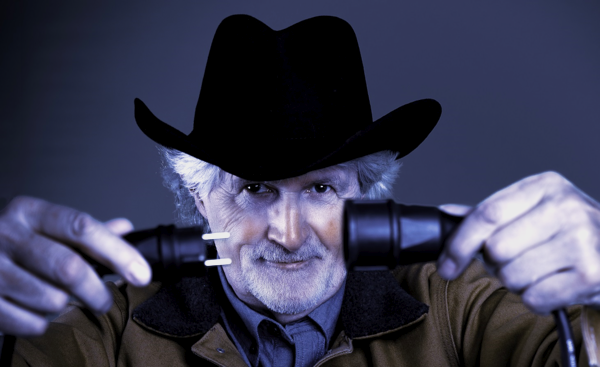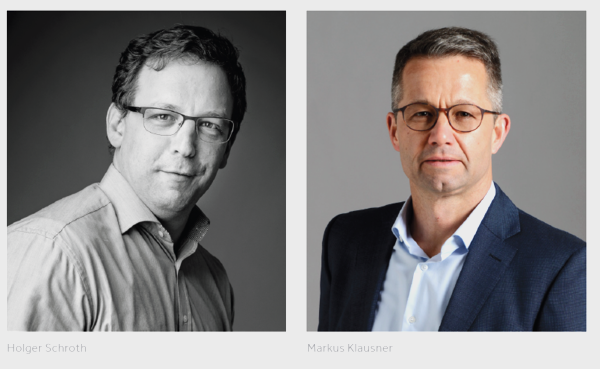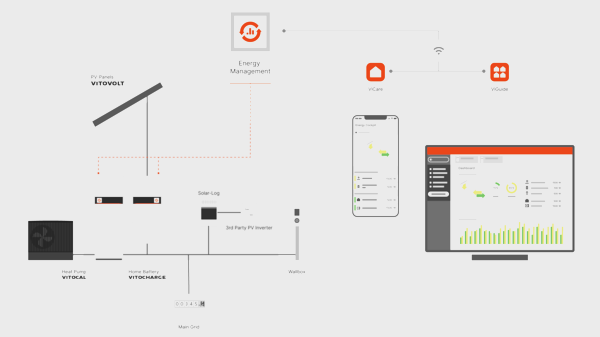Cooperation of two systems for better energy use
by Vivian Bullinger | 26.05.2023

2023, the energy management manufacturer Solar-Log GmbH and Viessmann Climate Solutions SE, one of the world's leading providers of sustainable climate and energy solutions, announced their strategic partnership in the field of monitoring photovoltaic systems.
We asked exactly what this strategic partnership means for the two companies, what technical solutions can be expected and, above all, what added value customers can derive from it.
Holger Schroth, Chief Product Officer Solar-Log GmbH, and Dr. Markus Klausner, CTO Viessmann Climate Solutions SE , answer our questions.
Questions about the company and partnership
At first glance, it is not immediately apparent to the outsider what Viessmann and Solar-Log™ have in common. What do Solar-Log GmbH and Viessmann, Climate Solutions SE have in common?
H. Schroth: Certainly an outsider does not immediately link that there is a lot in common between Viessmann and Solar-Log™. With Viessmann, one certainly thinks of heating systems and with Solar-Log™ of monitoring photovoltaic systems. However, both companies have two essential things in common: firstly, active support in the expansion of renewable energies and secondly, a focus on digital system solutions. Viessmann is continuously expanding its portfolio of sustainable heating and air conditioning solutions and also relies heavily on photovoltaics as an energy source. Solar-Log™ combines a wide variety of PV systems in its platform and enables users to monitor them in an efficient manner. For this, both companies rely on digital and networked solutions. That is the core that connects us both.
M. Klausner: It should be added that Viessmann has the corporate mission statement: We create living spaces for generations to come. This means that our solutions focus on sustainable energy concepts, which we can only fully exploit if we can integrate the various PV systems available on the market in addition to our own Viessmann PV systems. With the Solar-Log™ cooperation, we are therefore combining the strengths of both companies and transferring them into meaningful customer benefits.
How did Solar-Log™ and Viessmann come together?
H. Schroth: Admittedly, we were somewhat surprised when Viessmann contacted us a little over a year ago and shared the idea of the system solution with us for the first time. However, we quickly realized for ourselves that we had a common goal here and so, after an initial technical evaluation phase, we were able to start building the system solution.
M. Klausner: After a market evaluation, it quickly became clear to us what strength Solar-Log™ has in its business with regard to connectivity of different PV systems. This was precisely the point at which we explicitly approached the Solar-Log™ company with our idea. Fortunately, we recognized comparable approaches and quickly met with interest, so that we were able to move together into the evaluation and subsequent concept development.
Is there a unifying vision for the energy market of the future? And if so, what might it look like?
H. Schroth: There definitely is. Both companies see the benefits of photovoltaics and are working flat out to make optimum use of them locally. So we both see ourselves as "partners" for the property owner who wants to heat and cool his property sustainably or needs energy for mobility.
M. Klausner: From our point of view, the cooperation with Solar-Log™ ideally pays off our corporate mission statement to create living spaces for future generations, as we will thus make a significant contribution to the realization of sector coupling.

Technical solutions
You talk about integrated energy solutions (sector coupling). What exactly does that mean?
H. Schroth: With this solution, Viessmann is in the lead as far as the application to the customer is concerned. Solar-Log™ is pleased that we can help Viessmann as a "bridge builder" to extend their system solution to third-party devices. Here we benefit from the high level of compatibility that the company has achieved over many years.
M. Klausner: Solar coupling is the linking of locally and sustainably generated electricity with heat generation and even mobility. Our Viessmann Energy Management System is the central intelligence for controlling these activities. It ensures that the self-generated electricity is used to operate the heat pump, for household consumption and for charging the e-vehicle. The Solar-Log™ Gateway is the central building block for us, so that the Viessmann system can communicate with the PV system of a third-party supplier in order to be able to realize monitoring, self-consumption optimization and other applications in the future.

What are the benefits of coupling different sectors?
H. Schroth: By coupling energy generation, energy storage, heating, cooling and mobility, the decentrally generated sustainable energy from photovoltaics can be optimally used locally. Energy storage is certainly a key component here. While battery storage has become increasingly important for this purpose in recent years, we see that in the future, storage options will also provide significant added value through the heating, cooling and mobility sectors. If a system is so well coordinated that the PV energy generated is sufficient to cover the heating/cooling demand and the share for mobility, then certainly less battery storage will be needed and the overall profitability of the systems will be optimized. Today, this is often still done in a poorly coordinated manner, especially in existing systems, because the individual devices do not communicate with each other and each system has its own "logic". Integrated into Viessmann heat pumps and inverters, this combination extends the possibility of using inverters from other manufacturers for Viessmann energy management.
M. Klausner: In terms of the energy system as a whole, sector coupling is a key element for the energy transition, as locally generated energy can be used optimally and dependence on fossil fuel-generated electricity as well as fluctuating renewable power generation can be drastically reduced. Locally, sector coupling ensures the best possible use of available energy, intelligently split between stationary storage, heat generation, vehicle charging and household consumption. This type of intelligent self-consumption optimization saves customers energy procurement costs and increases their self-sufficiency.
What does this look like in practice? How are electricity, heat and mobility linked?
H. Schroth: This is done by means of two essential building blocks: communication and a higher-level logic. By enabling the devices to communicate with each other, you enable a higher-level "logic" to optimize the subsystems.
M . Klausner: In practice, we realize this with intelligent Viessmann Energy Management. Taking into account generation and consumption forecasts, we use it to maximize our own use of the electricity generated by the PV system. This is only possible if the Viessmann system can communicate with the PV system. Interconnected between the Viessmann system and the PV inverter, the Solar-Log™ Gateway serves as the central link.
What influence does sector coupling have on grid stability?
H. Schroth: A significant one. First and foremost, the optimized operation of the sectors reduces the high load peaks from the grid. Just imagine when, for example, heat pumps and e-charging stations need the most energy from the grid? Usually not when the sun shines the strongest, but during the times when the sun is not available. By using optimization logics, we shift these times to when there is enough energy available from the PV system. This provides active relief in the grids. On the other hand, high feed-in quantities are avoided, which also contributes to grid stability. This can even be transported further to a grid level: If there is too much energy in the grid - use the heat generators or cooling units to take it from the grid, if energy is needed, battery storage and e-car release energy into the grid, since a lot of plants can be addressed here at the same time, these quantities have a significant effect in the grid. This will certainly not make grid expansion superfluous, but at least it can take place on a moderate scale, which in the end remains affordable for everyone.
M. Klausner: With regard to grid stability, Viessmann has already implemented a very specific offer with ViShare Flexmodus, in which we offer the flexibility of our heat pumps bundled to the German transmission system operators. Flexibility can be expanded and improved by integrating PV systems via the Solar-Log™ Gateway, as generation and consumption can be optimally orchestrated and preemptively controlled based on demand in the grid. With this cooperation, we will therefore be able to jointly expand our contribution to grid stability at both transmission and distribution grid level in the future.
What role does digitization play in this?
H. Schroth: Digitization enables the devices to "talk" to each other and the logics that have been built up can actively influence the devices. Without networking, this would not be possible without major effort.
M. Klausner: The energy system consists of various individual components (electricity storage, PV inverters, etc). Digital bidirectional communication is the basis for intelligent control and orchestration. In addition, of course, we also use it to implement energy monitoring for the end customer as well as for the partner in the specialized trade.
Outlook
What future developments in the field of sector coupling would be conceivable?
H. Schroth: That's an exciting question. From our point of view, the quality of the optimization logics used will certainly play a key role. Here, the topic of AI will also not stop and thus predict user behavior even better and adapt the systems to it. Another exciting field will be the linking of several residential units or entire building areas in order to optimize these "energy cells.
M . Klausner: Our focus with regard to future developments is primarily in the area of grid stabilization and system efficiency. In the future, we plan to bundle the use of all flexibilities around the single-family home (generation, storage and consumption) in order to proactively support the power grid. The prerequisite, of course, is that the customer does not suffer any loss of comfort.
How can Viessmann and Solar-Log™ further contribute their added value here in the future?
H. Schroth: For Solar-Log™, the focus is clearly on expanding compatibility. In this way, we want to broaden the basis in order to network further subsystems with each other. We are counting on our colleagues at Viessmann to further improve the optimization logics. But we will also work separately on further interfaces to the energy market in order to bring generation, consumption and marketing closer together and to further increase the value of renewables.
M. Klausner: In addition to PV systems, the Solar-Log™ Gateway opens up a wealth of possibilities for integrating other components, such as heating rods or wallboxes. This ultimately increases the flexibility potential, which can be used to optimize self-consumption and to support the grids.
What will the future bring? What else can customers of both companies look forward to?
H. Schroth: We don't want to reveal too much here yet, but there are various topics that we are talking about together in order to maximize the benefits for the user. A major topic in the future will certainly be the activation of loads and energy reserves in order to contribute even more to grid stability in addition to local maximization of self-consumption.



